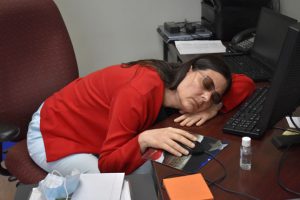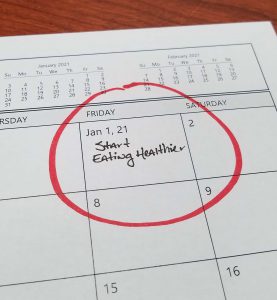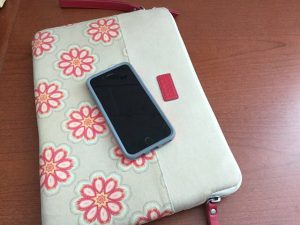
by Angela Hinkle | Mar 31, 2021

No sleep at night, tired at work.
Photo Source: E. Mudge
Experiencing sleeplessness? You’re not alone. Keep reading for things you can do to help you sleep well.
On average, Americans get less than seven hours of sleep a night. The hormone melatonin regulates the rhythms of our daily biological “clock,” which includes an optimum 7-9 hours of sleep per night. Unfortunately, there are oh so many, many things that inhibit that melatonin from doing its job correctly.
And when this rhythm breaks down, our overall health is at risk. Lack of proper sleep has been shown to increase risk for illnesses like heart disease and diabetes, as well as learning disabilities and mental illnesses like dementia.
So, what is keeping us from sleeping well?
Who has time to sleep?
There is so much work and fun to be done in a 24-hour day, that we often shelve sleep to lowest priority. “If I can get another hour’s worth of work done, I’ll catch up on sleep later” seems to be the modern mantra.
All those lights are great, but…
The bluer the light, the more it messes with our bodies’ cues to sleep. A candle flame with no blue light – no problem. Tablets and smart phones and televisions with lots of blue light can disrupt our sleep by about 60-95 minutes.
To sleep well, try some or all of these tips:
- Make sleep a priority. Schedule it as part of your regular routine. Try to go to sleep at the same time every night.
- Sleep with a night light that has a red light bulb. (Don’t put a red scarf over your lamp shade. This is a fire hazard.)
- No caffeine after noon (from coffee, tea, chocolate, etc.).
- Take a warm, soothing bath or shower within an hour of going to bed.
- Try Epsom salts in the bath and calming lavender, sandalwood, or juniper scents in the bedroom.
- Drink a cup of warm tea with valerian extract (a common ingredient in “sleepy” teas).
- Set your thermostat to a cool 62° to 69° during sleep time.
- Sleep on freshly laundered sheets.
- Turn off electronic devices at least one hour prior to bedtime.
- Stop eating at least two hours before bedtime.
Though it may seem like we need to go full speed ahead 24-7, we just can’t. And we should stop trying. We need good rest and sleep to help our body recuperate from the day.
So, try some or all of the techniques above to sleep well. Let me know how it goes. Zzzzzz.
For more information on sleep and your health, see what the CDC has to share Are You Getting Enough Sleep?

by Melanie Taylor | Mar 26, 2021
Did you know that over the past ten years, the National Institutes of Health (NIH) has been a partner in research to determine the physical and mental benefits of having a pet? It turns out that pets not only steal our hearts, but they can contribute to better cardiovascular health. Studies have shown that the bond between people and their pets can increase fitness, lower stress and bring happiness to their owners. Regular walking or playing with pets can decrease blood pressure, cholesterol, and triglyceride levels. Pets can also help manage loneliness and depression by giving us companionship. This was helpful to many people suffering from loneliness during the pandemic. In fact, between March and July of 2020, there was a surge in pet adoptions and some shelters could not meet the demand. Since people had more free time, less socializing, and lots of alone time, many people found a pet was just what they needed to fill that void.

Cali, a tortoiseshell cat, posing to get attention.
Photo Source: Melanie Taylor
Although many of us are slowly returning to the normal stresses of daily life, a pet can still give us those same health benefits. Just think about it: on those stressful days with busy work schedules, running kids around town to their activities, etc., what’s better than being greeted at your door in the evening by a dog with a wagging tail or a cat’s purr as they snuggle with you? Of course, do not forget those unique pets, such as birds, bunnies, hedgehogs, reptiles, fish, and lots of other furry and scaly friends of ours.They all greet you in their own special way.
On a safety note, always remember pets can carry harmful germs that can make us sick even when the pet appears healthy. People with compromised immune systems and pregnant women should always take extra precautions when interacting with pets. Some tips on staying safe and healthy around your pets are to always wash your hands after handling your pets and be sure to maintain your pet’s health by regular visits to the veterinarian. Also, practice good pet hygiene by keeping pets out of the kitchen, cleaning their toys, beds, food, water/food bowls, etc., regularly sanitizing areas the pets frequent, and, of course, cleaning a cat’s litter box daily and picking up dog poop outside and disposing of it properly. When pets are added to your family, always teach your children how to properly interact with the animal(s). Small children should always be supervised when interacting with any pets.

Sonny, a tabby cat, enjoying play time with his mouse toy.
Photo Source: Melanie Taylor
On a fun note, if you are a pet owner, you already celebrate your pet(s) everyday, but there is an annual day of celebration for our pets. National Pet Day is April 11, 2021. This is an extra special day to give your pet extra snuggles and maybe even an extra treat. Be sure to use this day to remember why your pet is so special to you and your family. Reminisce about your pet memories while giving him/her extra attention and maybe even share your special memories on social media. People love seeing pictures of pets. It makes everyone’s day brighter. Here are the top four ways people report making National Pet Day special for their pet, 1) I give my pet a special treat, 2) I tell my pet “I love you”, 3) I buy or make a special gift for my pet, and 4) I let my pet sleep in my bed with me. (https://nationaltoday.com/national-pet-day/)
So, be sure to remember your pet this National Pet Day in April.
To see the importance of pets in our lives and families be sure to check out the interesting insights below from surveys about people and their pets.
Interesting Insights about People and their Pets:
- 95% of pet owners say their pets are part of the family.
- 94% of families with an autistic child benefited from having a pet.
- 67% of households in the United States have a pet. Americans spend approximately $75 billion a year on pet care and products.
- 44% of people reported they would rather cuddle with their pet than their partner.
- 22% of Americans are attracted to people who treat their pet like a family member.
- 11% of Americans hang out with their pets (ex. watch TV, read books, etc.).
- 10% of owners are allergic to their pets.
- 10% of Americans consider their pet to be their best friend.
- 10% of Americans talk to their pet in a special voice.
- 10% of Americans carry on conversations with their pet.
As April approaches and spring weather arrives, be sure to get outside with your pets and enjoy some stress relief, feel the sunshine on your face, smell the fresh blooms, and take in the beauty of nature around you. It will provide positive health benefits for you and your pet as you take a long, relaxing walk together. If your pet is an indoor only pet, be sure to sit in the floor and play with your pet like you did when they were kittens, etc. They will love the extra time and closeness with you. No matter what type of pet you have, be sure to let them bring you happiness and relaxation, and you, in turn, can help them live their best pet lives possible.
Sources:
Center for Disease and Prevention (CDC):
https://www.cdc.gov/healthypets/health-benefits/index.html
National Today:
https://nationaltoday.com/national-pet-day/
The Washington Post:
https://www.washingtonpost.com/nation/2020/08/12/adoptions-dogs-coronavirus/

by Ginny Hinton | Feb 10, 2021
If you’re the parent of a “big kid” between the ages of 5 and 12, you’ve probably scratched your head at some point wondering how, where, and in what they should be traveling. There are more options now than ever! Unfortunately, many parents and caregivers make a dangerous choice, without even knowing they could be putting their kids in jeopardy. Following are some of the options for safe travel with older children, including how and why each might work for you:
BELT POSITIONING BOOSTER SEATS
Unlike a car seat, a booster is a positioner, not a child restraint. Its main purpose is to keep the seat belt on the child’s strong hips and collar bone. With a booster, the lap portion of the belt runs under an armrest or clip which holds it low on the hips and upper thighs. This positions the lap belt so that it can’t cut into the child’s soft abdomen, causing serious or potentially life-threatening injuries. Most boosters also position the shoulder belt to keep it flat across the collarbone and protect the neck. An updated study of booster seat effectiveness (Pediatrics, 2009) concluded that children ages 4-8 in boosters are 45% safer from nonfatal injuries than children in seatbelts. The study didn’t find any difference in preventing injury between backless and high-back boosters. Some parents prefer to use high-back boosters because they offer some side-impact protection and give their children a place to lay their heads if they fall asleep. Others prefer the convenience of a lightweight backless booster that can easily travel with the child and be moved between vehicles. A backless booster will NOT work if the vehicle headrest comes below the child’s ears because of the danger of whiplash from rear-end crashes. A child can safely move to a booster seat when he/she has outgrown a car seat by weight and height, as long as the child is mature enough to stay in position while traveling. This usually happens between ages 5-7 but depends on the individual child.

Credit: G. Hinton
VEHICLE LAP-SHOULDER BELTS
How do you know when your child is ready to “graduate” to an adult seatbelt? Because the height and depth of seats vary from vehicle to vehicle, and all children are not made exactly alike, there is no specific height or weight guideline. Instead, there is a simple 5-step test as follows:
• Is your child sitting all the way back in the seat?
• Do the child’s knees reach the edge of the seat without scooting?
• Do the child’s feet touch the floor?
• Does the shoulder belt cross the child’s collar bone and not his/her neck?
• Is the child mature enough to stay in position during the entire trip?
If you can answer “yes” to every question, your child is ready to use an adult seatbelt in that vehicle. If not, no matter what your child’s age, it might be best to continue using a booster seat for a while. When a child is too small sit in an adult seatbelt, the lap belt will slide up onto his/her stomach. In a crash, the belt will keep tightening because there is no bone or other object (i.e. the armrest of a booster) to stop it. During the crash, everything has to stop so fast that it causes the belt to put extreme force on the internal organs and spine, causing the organs to rupture and the spine to snap or fracture. This cluster of injuries is called “seat belt syndrome” and can be severe. Using a booster until your child is big enough to fit the vehicle seat eliminates the risk.

by Terri Keith | Jan 14, 2021
Setting a New Year’s resolution is a tradition for many people. Unfortunately, breaking those resolutions also seems to be a tradition. If your New Year’s resolution is to eat healthier, here are some tips to help you to be successful.

Photo Credit: Terri Keith, UF/IFAS Extension
First, you will be more likely to follow through on your resolution by setting a SMART goal. A SMART goal is one that is Specific, Measurable, Achievable, Relevant and Timed. You can find more information on setting a SMART goal here.
Second, know that eating healthier doesn’t necessarily mean going on a diet or avoiding all the foods you enjoy. Eating healthier can start with making simple substitutions to your favorite recipes, like using whole wheat pasta instead of refined grain pasta, or swapping out sodas and energy drinks for water or other unsweetened beverages. It could mean that you make a conscious effort to enjoy the foods that aren’t as healthy for you in moderation or work on lowering the amount of sodium/salt that you eat. There are many ways to eat healthier and if you need more suggestions, you can check out this article on 5 things to avoid eating.
Whether you are starting with simple steps or looking for more in-depth information, ChooseMyPlate from the USDA can be a useful resource. There, you can find information on daily recommended values for the different food groups, what counts as a serving, along with other resources, like recipes or healthy eating on a budget. You might be surprised to find out what counts as a serving!
Third, try involving your kids or other members of your household in working together to eat healthier. There’s even a section at ChooseMyPlate that focuses on healthier eating for families. It can be harder to stick with your resolution if you are the only one working on it because your shopping list can end up including more sweetened snacks than fruits and vegetables. If you need some inspiration to get started, you can find a few videos of recipes that were adapted from ChooseMyPlate here.
Eating healthier is a terrific goal any time of the year. If this is your New Year’s resolution, follow these tips and stick with it!

by Samantha Kennedy | Jan 14, 2021
Guess what, guys? We made it! We have finally put 2020 behind us and are now looking forward to 2021. I, for one, am hopeful. I am expecting great things from this year.
Admittedly, I have not always had an optimistic outlook. I used to like to say that I was a natural-born cynic. And while I still have cynical tendencies, I have learned strategies over this last challenging year that have really helped me look at things more positively and helped me deal with stress.
It all starts with mindfulness. While this has really become a bit of a buzzword in recent times, the foundations of mindfulness are solid and based on research. At its most basic, mindfulness refers to the practice of being in the moment. Sounds simple, right? Well, if your mental habits are as ingrained as mine were, it takes a lot of practice to be in the moment.
I am an overthinker. A brooder. A ruminator. As far back as I can remember, I have thought about things before I did them, then thought about them again for a long time afterwards. Especially if it was something I felt I had not done right or that did not go well. I would be driving or trying to sleep and thoughts, regrets, and recriminations would just be spinning, spinning, spinning endlessly in my head.

Spending time in a peaceful place without outside distractions is a great way to refresh and recharge. (Photo source: Marisol Amador, UF/IFAS)
This was just who I was. I had learned to live with it. I always knew that if something important was coming up, like an exam or a presentation, I would obsess about it beforehand to the point where I would lose sleep. If something happened that did not go well, I would fixate on it for days afterward.
It was stressful, but I dealt with it. And then 2020 happened.
Suddenly, I could not deal with it anymore. My obsessive ruminations and self-recriminations were suddenly unmanageable in the midst of the social isolation and worries brought on by the strains of a global pandemic.
I needed to find a way to change my outlook. A way to deal effectively with the overwhelming feelings I was experiencing. I wanted to be more positive. I wanted to stop seeing doom over every horizon. Most of all, I wanted to stop obsessing about everything all the time.
So I started reading about mindfulness. Then I started trying to practice it. I say “trying” because there are still days where I am just not feeling it, where I am just not able to find that quiet space inside myself that I need to tap into to be in the moment. However, I have gotten better at it with practice.
The key is breathing. Focusing on my breath – each inhale and each exhale, one after the other – allows me to feel centered, to relegate my other thoughts to the background. When outside thoughts arise, I have learned how to push them away and concentrate on the moment. And the next one. And so on.
The best part about this practice is how portable it is. No matter where I am, I always have my breath. If I am feeling overwhelmed or angry or sad or frustrated, I can simply take a few moments to concentrate on my breathing, allowing those feelings to just be, and, eventually, they pass, leaving me feeling refreshed.
I encourage all of you to take on 2021 with a mind towards mindfulness. You may be surprised at just how much a few minutes of purposeful breathing each day can improve your overall outlook. It has really changed my life.
For more information about mindfulness, check out the UF/IFAS Extension fact sheet Mindfulness: An Introduction.
UF/IFAS is an Equal Opportunity Institution.

by Melanie Taylor | Nov 24, 2020
2020 has been a year of many changes and challenges due to the Coronavirus pandemic, which unfortunately will continue into our holiday season. To protect our friends, family and community members we must continue following the science-based guidelines provided by the Centers for Disease Control and Prevention (CDC) and your state and local guidelines to prevent exposure and the spread of the virus.
Unfortunately, the Covid-19 epidemic numbers are rising again. Gatherings of any kind, both small and large, are contributing to the rise in positive cases. We can all make choices based on the scientific research that can protect us and others by making small changes in our 2020 holiday celebrations. Limiting the risk and being diligent in our actions should be our main goal until a vaccine is approved and dispersed throughout the country.

Holiday Dinner
Photo Source: UF/IFAS
Some unique and easy ways to celebrate the holidays this year are to “gather virtually” with those not in your immediate household or to gather in-person only with members of your own household. These two types of gatherings offer the lowest risk for spreading the virus. Your household is anyone who currently lives and shares common spaces in your home. People who do not currently live in your home, such as college students who are returning home from school for the holidays, should be considered part of different households. In-person gatherings that bring together family members or friends from different households, including those college students returning home, offer varying levels of risk. The level of risk is difficult to determine because people may have been exposed and/or are a carrier and may not be aware of it.
Here are some specific things to consider when deciding how to celebrate your holidays.
- Number of cases in your community – Be sure to know the number of positive Covid cases in your community. If the numbers are rising or are already high you should take precautions based on the data. You can check your specific county or city Covid rates at your local health departments website.
- Exposure during travel – Airports, bus stations, train stations, public transport, gas stations, rest stops and hotels are all places travelers can be exposed to the virus in the air and on surfaces. Be aware if you will be traveling or if you have guests traveling to your home.
- Location of your gathering – Indoor gatherings, especially those with poor ventilation, expose your family to more risk than outdoor gatherings.
- How long will your gathering last? – Time is an important factor to consider. The longer the gathering lasts the more risk those attendees will have of being exposed. Being within 6 feet of someone who has Covid for a cumulative total of 15 minutes or more greatly increases the risk of becoming sick and requires a 14-day quarantine.
- Number and crowding of people at the gathering – Gatherings with more people bring more risk than gatherings with fewer people. The size of a holiday gathering should be determined based on the ability of attendees from different households to stay 6 feet (2 arm lengths) apart, wear masks, wash hands and follow state, local, territorial, or tribal health and safety laws, rules and regulations.
- Behaviors of attendees before the gathering – People who do not consistently follow social distancing, wearing masks, regular handwashing and other prevention behaviors cause more risk than those who consistently practice the recommended safety measures.
- Behaviors of attendees during the gathering – Gatherings with more safety measures in place, such as mask wearing, social distancing and handwashing, offer less risk than gatherings where fewer or no preventive measures are being implemented. Use of alcohol or drugs may alter judgment and may make it more difficult to practice Covid safety measures.

Be sure your technology is charged and ready for your virtual holiday visit. Photo Source: Kendra Zamojski
Other high-risk holiday related activities to avoid to help prevent the spread of the virus:
- Going shopping in crowded stores.
- Participating or being a spectator at a crowded parade, race or other holiday celebration.
- Attending large indoor gatherings with people from outside of your household.
- Using alcohol or drugs that may alter judgment and make it more difficult to practice Covid safety measures.
Things to consider before your gatherings:
To make the holiday less stressful be sure to practice a virtual session before the virtual holiday gathering. Make sure everyone involved knows how to connect to the virtual holiday celebration so the gathering will go more smoothly and hopefully experience less technical problems on that day.
We all had to adapt to many unexpected changes this year and the holidays will be no different. Just remember being diligent now will protect family and friends and help control the spread of the virus in our communities. Be sure to enjoy your unique holiday season this year, but here’s hoping for a less challenging 2021.
Stay safe! Enjoy your family and friends from a safe distance! Happy Holidays!
Source:
CDC: https://www.cdc.gov/coronavirus/2019-ncov/daily-life-coping/holidays.html














